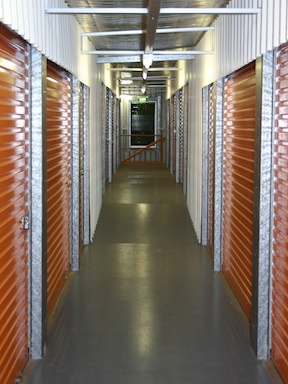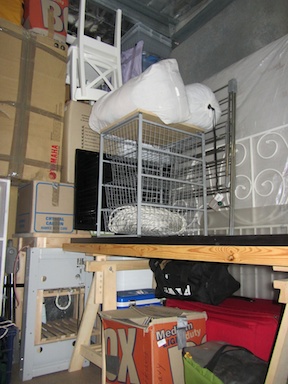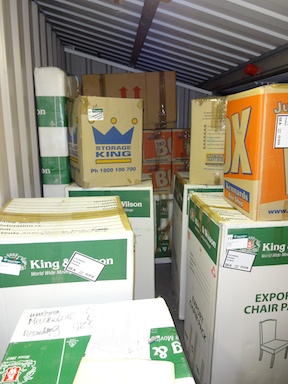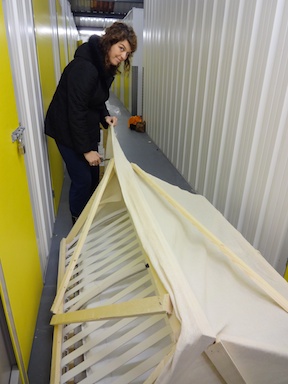Our apartment in Montevideo sits empty. We don’t mind that it isn’t generating income, but we do worry that nobody is collecting the mail, cleaning the windows, or paying the bills. To address the problem, we contacted Reynolds, one of the agents that we used when we were originally house-hunting, because we know that they manage short-term lets for tourists and business people. One thing swiftly led to another, and they agreed to take over the maintenance of the flat while we were away.
The idea now is to rent the apartment fully furnished to short-term visitors, giving us the opportunity to use it for ourselves whenever we are in Uruguay. Since the previous tenant took everything with him, the property is completely empty of fixtures, so we decided to fly over this coming December to decorate and to furnish. Bettina, our contact at Reynolds, warned us that it would cost about US$10,000 to furnish an apartment of that size, and that the workmanship was liable to be far inferior to what we were used to. Her advice was to import the furniture from abroad, and just accept the massive 60% import tax that would be levied by Uruguayan Customs. The price would end up about the same, but the fittings would be far superior.
This set us thinking. During a lifetime of travelling, we have acquired a lot of stuff. Flitting as we do from job to job and city to city, we are always moving into new houses. Unfortunately there is rarely time to move the existing furniture from our previous residence to our new one, because usually at the end of a contract we throw our locally acquired junk into some local storage and go travelling. When news of a new contract comes in, we’re usually far away from our furniture and in order to make an immediate start, we have to set up a new place from scratch. We are pretty good now at completely furnishing a new property within a day or so of arrival.

We had thus accumulated a succession of storage units, each containing a full household’s worth of stuff. In addition, when we sold our yacht Pindimara, we filled yet another storage unit with five years’ worth of liveaboard and cruising gear.

Yet another darn storage unit 
Stacking the stuff. Which city was this again?
Over the past couple of years, we have been slowly consolidating all our stored items into a facility in Canberra, Australia. Once we were pretty sure that we had everything in one place, we had the whole lot shipped here to the UK, where we happen to be working.
When the container arrived last month, we had no real idea what was in it. Certainly there would be a number of tables and chairs, some washing machines, a handful of fridges and freezers, and boxes and boxes of books. That much we knew. But there was another 10 cubic metres of mystery, stuff that we’d forgotten about, stuff that we thought we’d destroyed, stuff that we thought we’d lost, even some boxes that had been travelling around unopened for over fifteen years. It was time to have a shakedown.
We were renting a three-bedroom cottage in South Wales, and spent a lot of time shuttling van-loads of boxes back and forth between our large lounge and our storage unit. Whenever we had some spare time, we would open a box or two and itemise its contents. Some of the boxes were beautifully packed but contained nothing of any use. Others were a jumble of really expensive and useful stuff obviously thrown in at the last minute. We assembled a collection of over a dozen travel adaptors, innumerable bottles of skin and suntan lotion, and piles of crockery and cutlery.

We were glad to discover that the few remaining bottles of wine from our wedding (gifts from our friends) arrived intact, along with a surprise half-empty bottle of rare whisky and, mysteriously, tucked here and there amongst towels and sheets, a handful of small bottles of cider. Since these latter have no value at all, we could only assume that we couldn’t bear throwing them out at the time and had quietly tucked them away for later, not realising that they would not be unpacked again for years.
Slowly we separated our stash into three piles, representing the three forks of our future plans. One huge pile contained all the stuff that we needed to move onto our new yacht, Elizabeth. One small pile contained sentimental stuff that we couldn’t bear to part with, and which one day would find its way all the way back to Australia and into our building project in Tasmania. And finally, a much larger pile comprised of furniture and fittings which we wanted to ship to our apartment in Uruguay.
On the face of it, it may seem insane to ship several apartments’ worth of furniture from Australia to Britain, and then to ship a large proportion of it on to South America. However, if you factor in the savings of closing all those storage spaces and the time and flights that would have been necessary to sort things out ourselves, and also the fact that we already own all this stuff and so don’t need to purchase it again, it was much easier to pay somebody to load everything into a shipping container and then deal with it here. It’s also surprisingly difficult to freight things directly from eastern Australia to Uruguay, because most of the shipping is travelling in the opposite direction.
There is a great deal of paperwork involved in importing goods into Uruguay. Just for starters, every individual item needs to be photographed and valued, and that valuation must be agreed by Uruguayan Customs, who will then levy 60% import duty against it. Because we envisage that any problems will occur at the Montevideo end, we chose to arrange the freight using a Uruguayan shipping agent, rather than a UK one. This has the advantage that they know how the import duty system works, but the disadvantage that the UK packers and movers are contracting for a foreign company, and calmly inflate their prices to suit.
In order to minimise our costs, we chose to pack our goods ourselves. Generally this just meant unpacking everything, photographing it, and then shoving it back into boxes (and after our clear-out we had plenty of boxes!), but for a few of the larger items, we had to construct crates from rough timber. Luckily there happened to be a power outlet in our storage, presumably for the cleaners, so we’d sneak in at night with a power saw, and then try to sweep up all the sawdust before anybody noticed.

Boxes… boxes… endless boxes… 
Bronwyn helps crate up a sofa
After a good many sweaty nights in the storage, and quite a bit of rethinking and repackaging, we were all finished and ready for the removal men. The next day, the storage facility was hit by lightning, which didn’t damage our goods but took out the freight elevator, leaving us with the prospect of carrying twenty square metres of gear down a small metal staircase. By the time the truck arrived, we had established that the hydraulics were fine, it was just the safety interlock that was broken, and the owners had the good grace to allow us to use it even though the safety doors weren’t functioning. In a world gone mad with health and safety, thank goodness for some common sense.
We heard today that our container has been loaded on board a vessel. Our stuff is en route… but we still haven’t heard whether Montevideo Customs have agreed with our valuation. Still, there’s nothing we can do about it now. Forward to Montevideo!